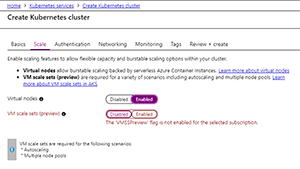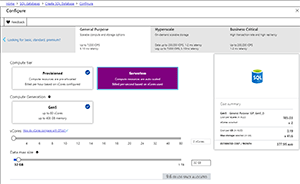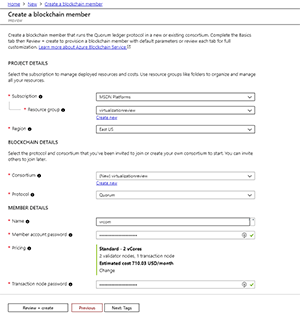In-Depth
A Look at the New Azure Releases & Improvements Revealed at Build 2019
From hyperscale database engines and improvements in ML.NET 1.0, to the preview of Azure Blockchain Service and new flavors of Azure SQL Database, here's a glimpse at what was announced at the Microsoft developer conference.
Not long ago Microsoft held its annual developer conference and while the "new release every three years" of traditional software development is gone and replaced by a steady stream of minor improvements, there were nevertheless some very interesting revelations. In this article I'll cover what's been improved and released in Azure at Build 2019.
This includes hyperscale database engines, improvements in ML.NET 1.0, Azure Blockchain service; Apache Spark, etcd APIs and Notebooks for Cosmos DB. Blockchain can now be connected to Flow and PowerApps with new connectors, while Dev Spaces, Kubernetes-based event-driven autoscaling (KEDA), virtual nodes and Azure Policy are all coming to Azure Kubernetes Service (AKS). Azure SQL Database now comes in an Edge flavor and a serverless flavor and Azure Active Directory is supported in GitHub Enterprise. Oh, and HoloLens 2 is really cool.
Containers & Kubernetes
There's no escaping the buzzwords of containers and Kubernetes in IT, but truth be told, these are young technologies with rough edges compared to their predecessors. True to form, Microsoft is aiming to make these technologies more approachable and easier to adopt and the new Dev Spaces is one way this is achieved. It creates a shared cluster where developers can test iterations and update different parts without affecting other parts of a microservices architecture application. Note that it's not designed to run in your production cluster, rather in the development cluster.
The new integration with Azure Pipelines is designed to make deployments from a Git repository to AKS smooth and helping teams adopt continuous integration/continuous delivery easier. As we've looked at in earlier articles, Azure Policy is an often-overlooked gem for governing cloud deployments and it's now available for AKS deployments.
Another buzzword is serverless and a new open source service (developed by Microsoft together with Red Hat), Kubernetes-based event-driven autoscaling (KEDA) brings the power of Functions-as-a-Service (FaaS) event-driven scaling to AKS (or any other Kubernetes deployment). Instead of waiting for CPU or memory to be overloaded and then scaling out the cluster, KEDA will scale based on events from a Kafka stream, Azure Queues, Azure Service Bus, RabbitMQ, HTTP and Azure Event Grid.
Last year Microsoft touted virtual kubelets, a technology that the company donated to the Cloud Native Computing Foundation (CNCF) and AKS virtual nodes (Figure 1) is now generally available. Instead of having to wait for AKS to spin up additional nodes to run more containers, these are available almost instantaneously and you only pay per second you use them. Note that virtual nodes are only available for Linux containers today.
 [Click on image for larger view.] Figure 1. AKS with virtual nodes.
[Click on image for larger view.] Figure 1. AKS with virtual nodes.
Databases
If there was any doubt as to the growth of data in the world today, the number of announcements around databases and related technologies should be ample evidence.
Azure SQL Database now comes in an Edge flavor that runs on both ARM and Intel processors, is optimized for data streaming and time series data, and uses machine learning to analyze your data before (optionally) uploading it to the cloud. Edge is managed from the cloud with updates from Azure and is currently Linux-only and in private preview.
At the other end of the spectrum is Hyperscale, which provides seamless scaling of SQL databases (PostgreSQL and Azure SQL). Spreading the database across potentially hundreds of nodes, and automatically sharding the data while still presenting the database to the developer as a single endpoint, lets your developers get back to focusing on business logic, rather than the plumbing of the underlying database. For Azure SQL the Hyperscale tier lets you store 100TB of data (with higher limits on the horizon), run instant backups and nearly instant restores, and it's optimized for OLTP workloads.
Azure SQL now also comes in a serverless flavor (Figure 2) where the compute side only spins up when there's load and seamlessly scales, and when the load subsides you only pay for the data storage side.
 [Click on image for larger view.] Figure 2. Azure SQL serverless.
[Click on image for larger view.] Figure 2. Azure SQL serverless.
If NoSQL is more your cup of tea, Cosmos DB now offers native integration of Apache Spark, which means you can run operational analytics and artificial intelligence (AI) against the data stored in your globally distributed databases. One of the strengths of Cosmos DB is the ability to connect to it with various protocols such as Cassandra, MongoDB and Gremlin. Spark is simply added to that list. When you're exploring data, Jupyter Notebooks are a popular tool for ML and running queries, they're now integrated directly into Cosmos DB. Finally, if you're running your own Kubernetes clusters you can use Cosmos DB as the etcd database for storing its configuration, letting you scale your clusters globally.
Blockchain
No buzzword bingo is complete without blockchain and Build 2019 didn't disappoint here, with Azure Blockchain Service (in preview) providing point-and-click creation of fully managed networks with management and governance built-in (Figure 3). Driven by customer demand it was clear that building the foundation for a consortium blockchain network was hard for customers and this was before the actual business logic could be built on top of it. This service should help businesses get started, without having to worry about the underlying infrastructure, pricing is straightforward, as well. There's also a Azure Blockchain Development Kit, which brings connectors for Flow and LogicApps, another move to make adoption of this complex technology easier for non-experts. And the plug-in for Visual Studio Code is going to simplify development.
 [Click on image for larger view.] Figure 3. The Azure Blockchain Service.
[Click on image for larger view.] Figure 3. The Azure Blockchain Service.
Artificial Intelligence
There are lots of different enhancements in AI, but the one that I think will have the most real-world impact is the new Form Recognizer, which (based on five sample forms you provide) will extract text, key-value pairs and tables from any form. Imagine all the millions of paper-based forms used every day being automatically digitized, without having to build specific ML models for each form.
Speaking of ML, the new visual interface for building, training and deploying models is opening up ML to more developers. MLOps is Microsoft's term for integrating ML development with the rest of application development and management through integration with Azure DevOps. The release of ML.NET opens up ML to traditional .NET developers. If you're using GitHub Enterprise you can now integrate with Azure Active Directory.
Wrapping Up
This is but a slice of the new Azure stuff revealed at Build 2019. In case you missed the HoloLens 2 demo it's well worth a look, this second version adds finger tracking, the ability to flip up the glasses and a more comfortable fit.
Next month I'll look at Azure Lighthouse and Azure Bastion, both interesting services released after Build.
About the Author
Paul Schnackenburg has been working in IT for nearly 30 years and has been teaching for over 20 years. He runs Expert IT Solutions, an IT consultancy in Australia. Paul focuses on cloud technologies such as Azure and Microsoft 365 and how to secure IT, whether in the cloud or on-premises. He's a frequent speaker at conferences and writes for several sites, including virtualizationreview.com. Find him at @paulschnack on Twitter or on his blog at TellITasITis.com.au.